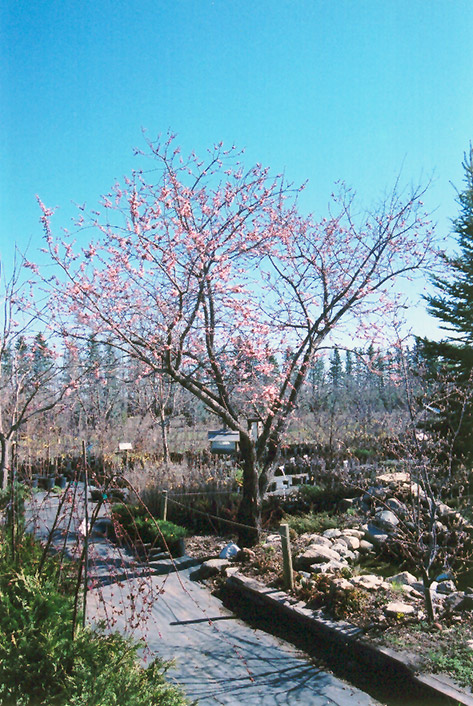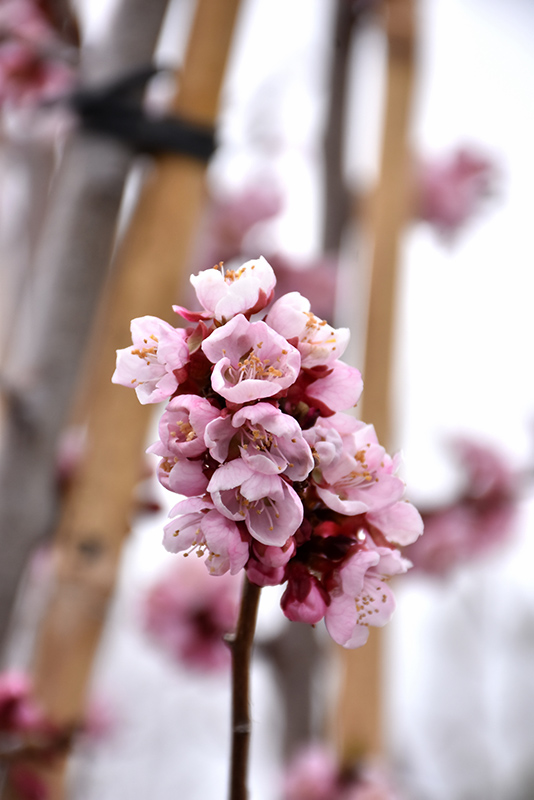Westcot Apricot
Prunus mandshurica 'Westcot'
Height: 30 feet
Spread: 25 feet
Sunlight:
![]()
Hardiness Zone: 3a
Description:
A hardy apricot for the backyard orchard with showy pink flowers in early spring followed by tasty yellow fruit blushed red in mid-summer, good for jam; needs full sun, well-drained soil and a pollinator; flowers can be damaged by late spring frosts
Edible Qualities
Westcot Apricot is a medium-sized tree that is typically grown for its edible qualities. It produces yellow round fruit (technically 'drupes') with a red blush and yellow flesh which are usually ready for picking in late summer. Note that the fruits have hard inedible pits inside which must be removed before eating or processing. The fruits have a sweet taste and a firm texture.
The fruit are most often used in the following ways:
- Baking
- Preserves
Features & Attributes
Westcot Apricot is covered in stunning clusters of fragrant shell pink flowers along the branches in early spring, which emerge from distinctive pink flower buds before the leaves. It has green deciduous foliage. The pointy leaves turn yellow in fall. The fruits are showy yellow drupes with a red blush, which are carried in abundance in late summer. The fruit can be messy if allowed to drop on the lawn or walkways, and may require occasional clean-up.
This is a deciduous tree with an upright spreading habit of growth. Its average texture blends into the landscape, but can be balanced by one or two finer or coarser trees or shrubs for an effective composition. This plant will require occasional maintenance and upkeep, and is best pruned in late winter once the threat of extreme cold has passed. Gardeners should be aware of the following characteristic(s) that may warrant special consideration;
- Messy
- Disease
Aside from its primary use as an edible, Westcot Apricot is sutiable for the following landscape applications;
- Shade
- Orchard/Edible Landscaping
Planting & Growing
Westcot Apricot will grow to be about 30 feet tall at maturity, with a spread of 25 feet. It has a low canopy with a typical clearance of 4 feet from the ground, and should not be planted underneath power lines. It grows at a medium rate, and under ideal conditions can be expected to live for 50 years or more. This variety requires a different selection of the same species growing nearby in order to set fruit.
This tree is typically grown in a designated area of the yard because of its mature size and spread. It should only be grown in full sunlight. It does best in average to evenly moist conditions, but will not tolerate standing water. It is not particular as to soil type or pH. It is highly tolerant of urban pollution and will even thrive in inner city environments, and will benefit from being planted in a relatively sheltered location. This is a selected variety of a species not originally from North America.


